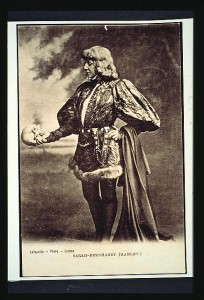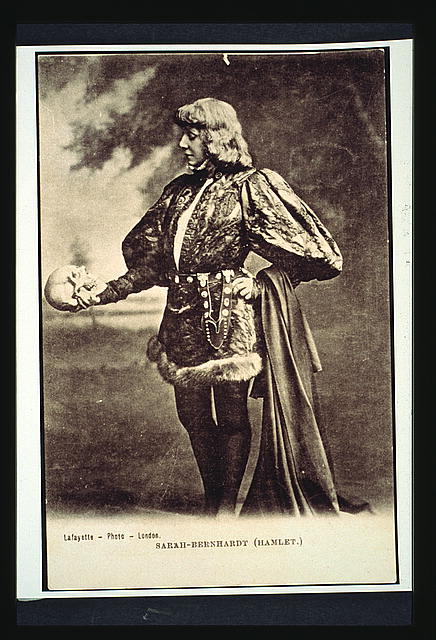From The Truth about the Stage, by Corin, 1885 (pp. 53-57)
Chapter 2: Stage Traps and Pitfalls – Stage Properties

Now, throughout the whole range of dramatic literature, there is no play easier to produce than Shakespeare’s noble tragedy of “Hamlet.” In the most wretchedly-appointed theatre an old green baize, a rampart set, a palace arch chamber, a back landscape, and a pair of castle gates are usually to be found. And what temple of the drama does not possess a couple of huge throne chairs, upholstered with Turkey twill and all ablaze with Dutch metal. The bare announcement that “Hamlet” would be played for one night was sufficient to gladden the hearts of the stage-carpenter and the property-man. The prompter would scribble his plots, i.e., lists of scenery and accessories required for the tragedy in a few moments, and many an experienced property-master would scorn to accept a “plot” of “Hamlet.” There is, however, one most important “property” used in the first scene of the fifth act of that tragedy, and its absence would be fatal alike to the Gravedigger and the Prince of Denmark. It is nothing more nor less than a human skull – Yorick’s skull! Now, the managers of some provincial theatres cannot boast of having in their heterogeneous collection of properties a real cranium viri. Consequently, the ingenuity of the property-man, that veritable Jack-of-all-trades, is frequently put to a severe test before a presentable substitute can be produced. Continue reading A skull for Hamlet

